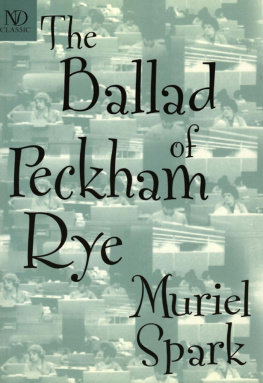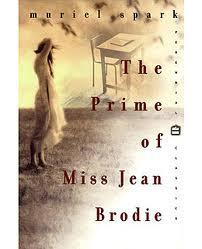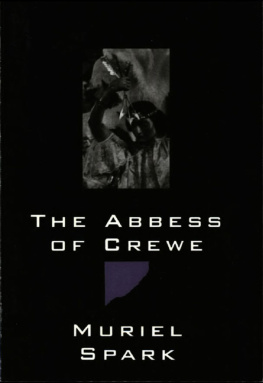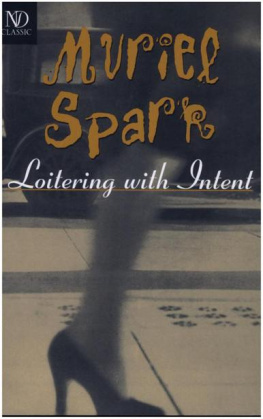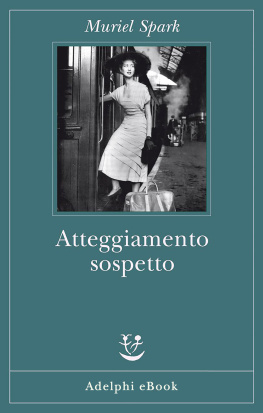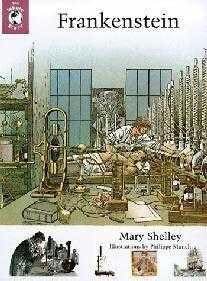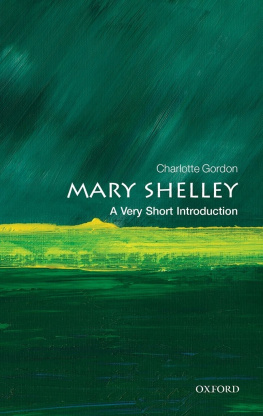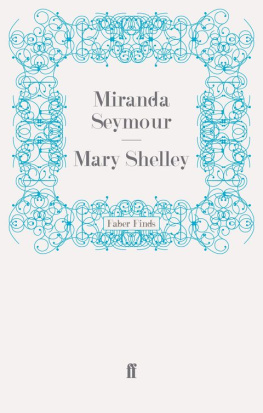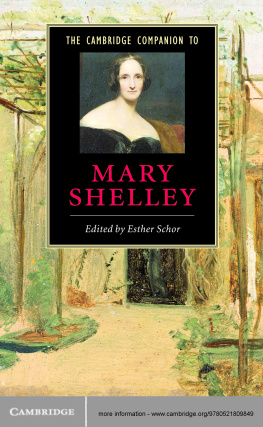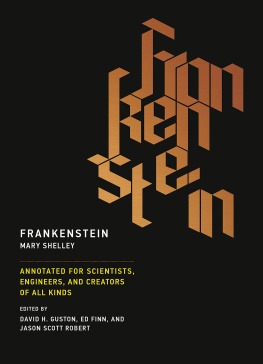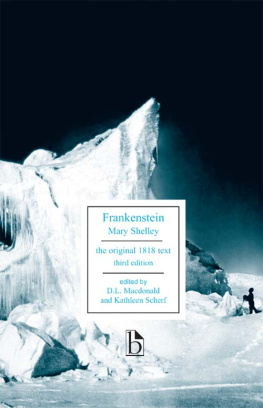
Mary Shelley
Muriel Spark was born in Edinburgh in 1918. After some years living in Africa, she returned to England, where she edited Poetry Review from 1947 to 1949 and published her first volume of poems, The Fanfarlo , in 1952. She eventually made her home in Italy. Her many novels include Memento Mori (1959), The Prime of Miss Jean Brodie (1961), The Girls of Slender Means (1963), The Abbess of Crewe (1974), A Far Cry from Kensington (1988) and The Finishing School (2004). Her short stories were collected in 1967, 1985 and 2001, and her Collected Poems appeared in 1967. Dame Muriel was made Commandeur des Arts et des Lettres (France) in 1996 and awarded her DBE in 1993. She died in Italy on 13th April 2006, at the age of 88.
Also by Muriel Spark from Carcanet Press
Curriculum Vitae
All the Poems
Mary Shelley
Muriel Spark

Introduction
Michael Schmidt
On 17 August 2004 my Carcanet editorial colleague Judith Willson and I crossed the Pennines to Harrogate to meet Muriel Spark and Penelope Jardine. They were on their way to Sparks native Edinburgh for the Book Festival, where the eighty-six-year-old novelist was to be lavishly fted. Carcanet was publishing All the Poems , her comprehensive Collected , and she had agreed to sign fifty copies. We had sent them to her Tuscan home in Civitella della Chiana. She had signed them at leisure, boldly, in a gothic copperplate, and brought them with her in two approximate parcels in her enormous car. She declined to fly; her visits to Britain were not frequent but leisurely, this last one quite Edwardian in pattern and pace. Preparations for our rendezvous via her London agent were elaborate. She was frail and particular.
Spark and her companion had chosen their Harrogate hotel for its advertised royal pretensions. It was not what they had anticipated. When they went up to their room upon arrival, she told us, they found the beds dressed in seven dusty petticoats. The food was not good and lunch was served only on Sundays. When we arrived, we were asked to wait for her in a little playing-card-themed reception room, all black and white and red, spades, hearts, clubs and diamonds on the upholstery, carpet, wallpaper, lampshades, and even on the veneering of the table. Here too was dust, stirred by steeply slanting rays through grey sash windows.
She seemed at first reluctant to join us for lunch, but when she realised we had a car at the door and she could escape from the hotel, she grasped the moment and we drove down into town. She became cheerful and wry. Once we were seated at our table in a restaurant with conventional pretensions she was reluctant for the party to break up. Her conversation was brisk, tangential. Her mind moved inferentially. She could evoke a whole character with a single detail or by describing a small act or gesture. Her poems work that way, finding a course directly to the heart of their subject. And that heart is often gothic with, perhaps, more than a scent of Mary Shelleys cordite. Take, for example, The Grave that Time Dug (1951), a poem not unknown to Elizabeth Bishop:
This is the child an instant born
that lit the stove
that warmed the hand
that rapped on the box
that lay in the grave that time dug.
This is the pink deceptive thorn
that bled the child an instant born
that lit the stove
that warmed the hand
that rapped on the box
that lay in the grave that time dug.
*
In the previously unpublished note included below, dated 1950, Muriel Spark proposed that her first book, on Mary Shelley, Child of Light: A Reassessment (1951), was to be a critical-biography which incorporated her digested version of The Last Man (added back into this new edition). Spark was already twice the age that Mary Shelley had been when she composed Frankenstein; or, The Modern Prometheus . The Second World War was over but its scars were still deeply etched on the face of London. The world had changed and what had seemed wilful, fantastic, playfully sinister before it now looked rather different, after the death camps, Hiroshima and so much else that was coming to consciousness. It was now possible to see that Mary Shelleys novels are almost entirely without their counterpart in feminine literature, being the prototypes of the scientific extravaganza popularized by H.G. Wells, and recently reflected in the novels of Aldous Huxley and George Orwell. There were the kinds of connection between Muriel Spark and her subject that gave the project a superstitious rightness. They shared initials because they retained their husbands surnames; 1 February was the date of Shelleys death and of Sparks birth. Spark revisited Shelley down the years, a point of departure and a touchstone. The narrative technique she devised for the biographical passages, light, economical, indicative rather than exhaustive (a technique further perfected by Claire Tomalin in her Katherine Mansfield ), would prove useful in her fiction.
The pitch she made for her Mary Shelley book was radical. In The English Novel (1954) Walter Allen did not even mention Mary Shelley. Her most famous book, a phenomenon in its own time, continued to be categorised with childrens horror literature. Its deliberate quest for effect, the designs it has on readers a pursuit of sensation over truth made it seem laboured and aesthetically trivial. Semiotics, feminism and other forces in particular Muriel Sparks advocacy have brought it into the canon, and thence into the curriculum. By the time Spark thoroughly revised her book in 1987, Mary Shelley had become respectable and unignorable. Frankenstein was the first English novel in which a scientific theme had been combined with the Gothic horror convention, Spark wrote. And The Last Man , despite its moralising solemnity, Spark calls an amazingly powerful story, characteristic of an age in which poets and painters explored the theme in a general pessimistic reaction to the progressive time-spirit. Spark describes Mary Shelley as the author of prophetic fiction who in The Last Man lays humanism to rest.
Horace Walpoles gothic original The Castle of Otranto (1764) had its origin in a nightmare. So did Mary Shelleys Frankenstein , unless with Joyce Carol Oates we prefer to call it a hypnagogic fantasy in her bed, which sounds so much more serious. Nightmare or fantasy, it showed her the way to her pale student of unhallowed arts and his monstrous creation that stands at his bedside, opening his curtains, the whole spookiness of the situation contained in that hesitant comma, the monsters fear, and the pale students, and ours as readers congealing in that tiny curl of punctuation. Shelley contrived something that would frighten her reader as much as the nightmare had frightened her. In her 1831 introduction she recalls her excitement, vividly re-enacting the successive moments of conception: the intellectual seed of the nightmare, the nightmare itself witnessed (she was not its subject), etc. Thus she began: It was on a dreary night of November
Percy Shelley had been fascinated by modern science, its promise and potential. Marys concern with its darker aspects, its treachery when pursued in the wrong ways, beyond understanding into the realm of instrumentality, signalled what would become an intense Romantic hostility to the pretensions of progress, a hostility which became more settled as the years advanced towards the estrangement of science and the arts later in the century. This Romantic resistance chimed with Sparks own Roman Catholic scepticism of progress.
Next page


